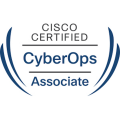- August 10, 2023
- Posted by: team SOUTECH
- Category: Blog, Cyber-security and Ethical Hacking Training, Ethical Hacking and Kali Linux Free Training, Security, Technologies

A digital certificate is a cryptographic document issued by a trusted third party, known as a Certificate Authority (CA). It verifies the authenticity and integrity of digital information, such as a website or an email, by binding it to a specific identity and providing a digital signature. This helps establish secure communication and build trust in online transactions.
Case Study: An e-commerce company needs to secure its online transactions. They select a trusted CA, generate a CSR, and submit it for validation. They complete the required domain ownership validation by adding a DNS record. Once the validation is successful, the CA issues the digital certificate. The company installs the certificate on their web server and configures it to enable secure HTTPS communication. They verify the certificate’s validity using OpenSSL and regularly monitor its expiration date to ensure timely renewal.
Step-by-step instructions:
1. Identify the need for a digital certificate: Determine the purpose of obtaining a digital certificate, such as securing communication, establishing trust, or enabling encryption.
2. Select a Certificate Authority (CA): Choose a trusted CA that issues digital certificates. Well-known CAs include DigiCert, Let’s Encrypt, and GlobalSign.
3. Generate a certificate signing request (CSR):
a. Generate a private key using a tool like OpenSSL (https://www.openssl.org/) or the key management tool provided by your chosen CA.
b. Create a CSR that contains your organization’s details, public key, and requested certificate information.
4. Submit the CSR to the CA:
a. Access the CA’s website or online portal to submit your CSR.
b. Follow the instructions provided by the CA to complete the submission process.
5. Verify domain ownership or identity:
a. Complete any required validation steps, such as confirming domain ownership by adding a specific DNS record or responding to an email sent to a designated address.
b. Provide any additional documentation or information as requested by the CA to validate your organization’s identity.
6. Obtain the digital certificate:
a. Once the validation process is complete, the CA will issue the digital certificate.
b. Download the certificate from the CA’s website or receive it via email.
7. Install and configure the digital certificate:
a. Install the digital certificate on the appropriate server or device, such as a web server, email server, or VPN gateway.
b. Configure the server or application to use the certificate for secure communication or encryption.
8. Verify the digital certificate:
a. Use tools like OpenSSL or online certificate verification services to check the validity and integrity of the certificate.
b. Verify that the certificate’s details match your organization’s information and that it is issued by a trusted CA.




